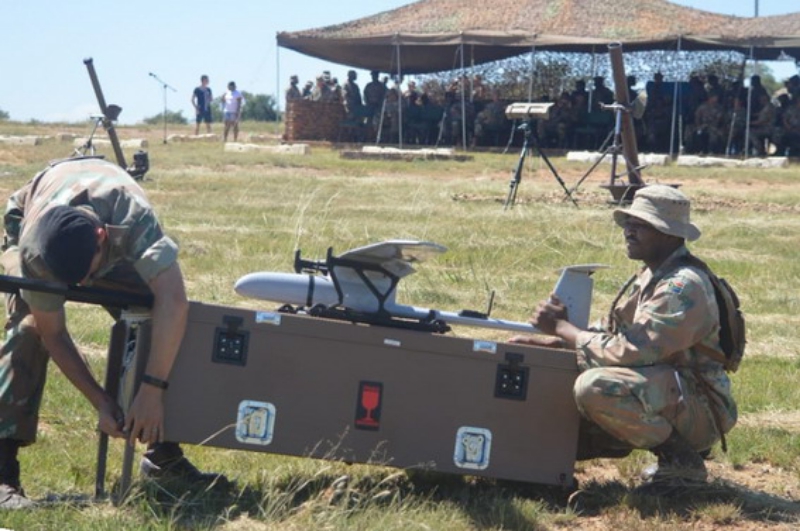The South African National Defence Force is deploying hand-launched unmanned aerial vehicles to its peacekeeping force in the Democratic Republic of Congo for the first time. This appears to be the Indiza, locally developed by the Council for Scientific and Industrial Research.
The unmanned aerial vehicle (UAV) was displayed during Exercise Phirima 3 held on 21 March at Potchefstroom. It was designed to provide final combat readiness for 2 South African Infantry Battalion’s deployment to the Democratic Republic of Congo (DRC).
The South African National Defence Force (SANDF) has been testing the UAV since at least last year – this has included successful evaluations in the Kruger National Park. In October 2018 an SANDF official told defenceWeb that the evaluations were ahead of a potential deployment to the DRC.
The Indiza was developed by the Council for Scientific and Industrial Research (CSIR) and can be folded up into a small container for deployment. The CSIR revealed that the aircraft is in production for a client but was not allowed to reveal who it was.
A CSIR official told defenceWeb that the Indiza has been flying a lot, and recorded over 100 flights and 70 flight hours in the current financial year. This included successful testing in 50 km/h winds and on border safeguarding missions with the SANDF.
Indiza is a hand-launched two metre span, rugged mini-UAV that can fly for over an hour at distances of up to 10 km using a brushless electric motor powered by a lithium battery pack. The Indiza airframe can house a number of generic camera pods, including day and night cameras. Various payloads up to 500 grams can be accommodated in Indiza’s modular payload bay. The camera is retracted on landing, which is assisted by a laser ranging system that is able to determine the UAV’s height above the ground.
Indiza’s ground-based equipment consist of a laptop with data link modems and optional tracking antenna system to extend the range and improve the communication quality of the video and data links. An optional radio control transmitter can be used for man-in-the-loop control of both the airframe and camera system.
The CSIR said Indiza can be used for surveillance activities such as public order policing, border management and infrastructure monitoring as well as research and development projects.
“There are very few other unmanned aerial systems that can match Indiza in terms of low-cost, advanced functionality, ease of operation, adaptability and open architecture design. The culmination of all of these renders Indiza unique in its class and our engineers and test facilities are readily available to perform adaptations or to evaluate new concepts of use. The next variant of Indiza will be able to perform up to a four hour mission by maintain the existing design baseline, but switching to a different propulsion option,” the CSIR said.
Source: Defence Web

